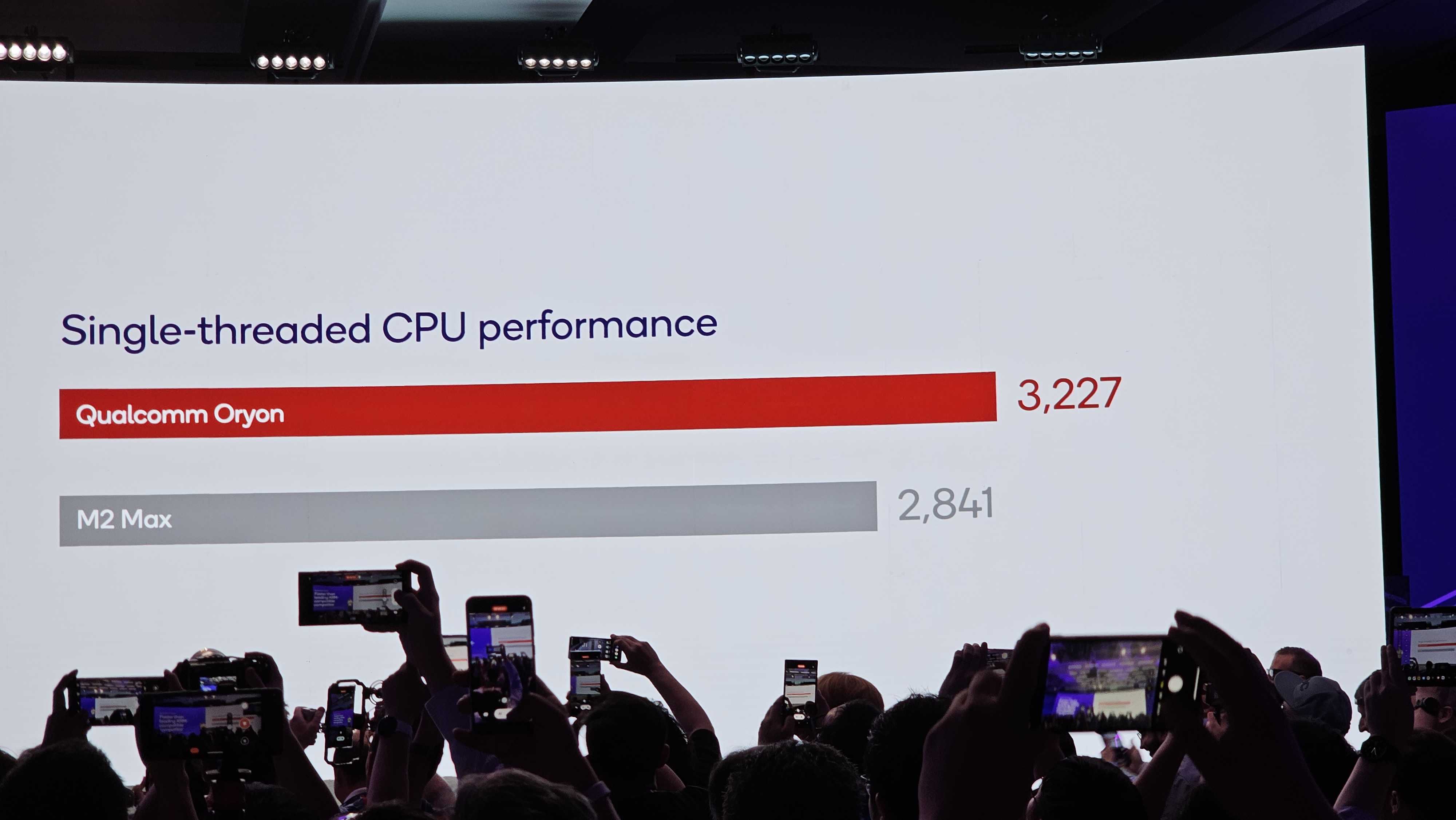Snapdragon X Elite wants to push aside Intel and power your all-day, AI-ready Windows PC
Coming to Windows PCs in 2024

Look out Intel, stand back Apple, Qualcomm is making its most ambitious attempt to steal the laptop computing crown, launching Snapdragon X Elite, a brand-new system on a chip (SoC) for Windows PCs.
The chip company announced the new SoC on Tuesday during its Snapdragon Summit in Hawaii. At the core of the new silicon is Qualcomm's Oryon CPU, which Qualcomm claimed is faster in some benchmarks than both Apple's M2 Max and Intel's Core i9. Granted, the numbers Qualcomm showed off were for single-threaded performance and on an unnamed benchmark test. They also claim that, at peak performance, it uses "70% less power" than comparable chips from competitors.

Still, it's not just the possible raw performance and power-savings of the Snapdragon X Elite that might excite system buyers in 2024 (when the silicon is set to ship). Qualcomm is positioning the chip as an AI wonder, capable with its 75 Tera operations per second (TOPs) of running, according to Qualcomm, AI models with 13 billion parameters on-device.
The Oryon CPU is backed by a Hexagon Neural Processing Unit (NPU) and Qualcomm's Adreno GPU, which Qualcomm claims can manage up to 4.6 teraflops.
Qualcomm is also claiming "days" of battery life, which is likely enabled by the chips' energy-efficient 4nm process (though some may be surprised Qualcomm didn't deliver a 3nm process CPU).
Systems shipping with the Snapdragon X Elite next year will support powerful and often bleeding-edge specs. On the camera front, it'll support cameras with up to 64MP sensors and 4K video capture. It's also designed to work with Microsoft's Windows Studio features (for things like portrait blur and eye tracking). The systems will have native support for 5G, Wi-Fi 7, and Bluetooth 5.4.

While we'll have to wait until next year for Snapdragon X Elite systems, we already know of one featuring Qualcomm's powerful silicon: a Microsoft Surface laptop.
Sign up for breaking news, reviews, opinion, top tech deals, and more.
During the launch, Microsoft CEO Satya Nadella took the stage and touted the native AI capabilities of the new processor on the Windows platform: "The marquee experience for us is going to be Copilot… Copilot is going to become the Start button."

Qualcomm has even grander plans for the Snapdragon X Elite, promising that it, or some version of it, will make its way to cars and AR/VR applications. We asked a Qualcomm representative about the possibility of Snapdragon X Elite showing up in tablets and Chromebooks and they told us that this is a "Snapdragon product for Windows Laptops that use the Oryon CPU. Oryon CPUs may be used in future products in different form factors."
Perhaps not coincidentally, Qualcomm's official Snapdragon X Elite reveal comes just hours after Apple teased what most believe is an October 30th Mac event that will reveal its latest Apple Silicon, the M3. Maybe Apple knew what was coming, maybe not, but we are clearly in for an interesting winter and early 2024 in the laptop computing component space.
You might also like

A 38-year industry veteran and award-winning journalist, Lance has covered technology since PCs were the size of suitcases and “on line” meant “waiting.” He’s a former Lifewire Editor-in-Chief, Mashable Editor-in-Chief, and, before that, Editor in Chief of PCMag.com and Senior Vice President of Content for Ziff Davis, Inc. He also wrote a popular, weekly tech column for Medium called The Upgrade.
Lance Ulanoff makes frequent appearances on national, international, and local news programs including Live with Kelly and Mark, the Today Show, Good Morning America, CNBC, CNN, and the BBC.
- Philip BerneSenior Editor, Mobile Reviews & Buying Guides